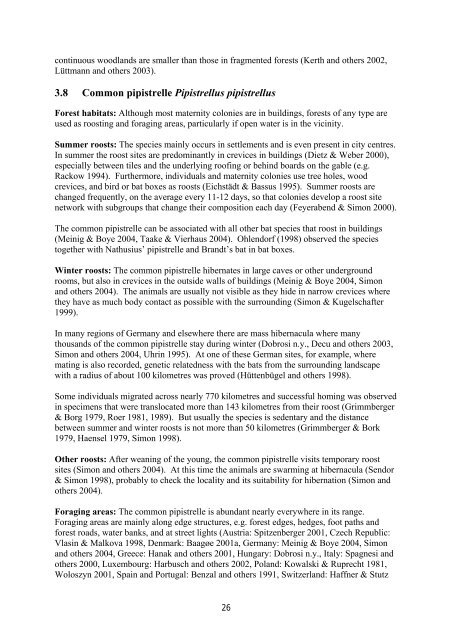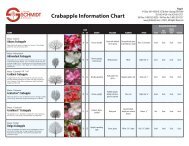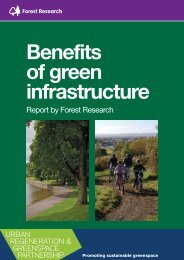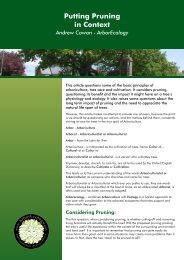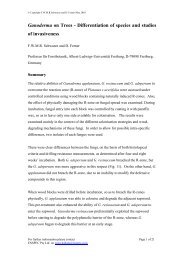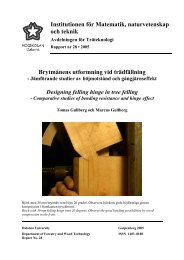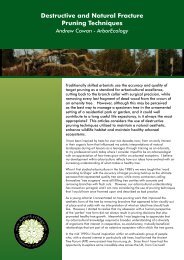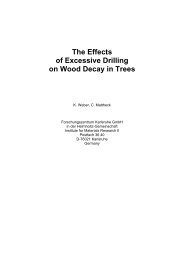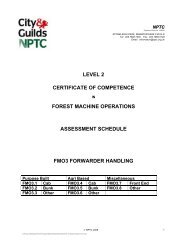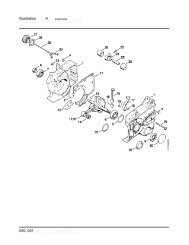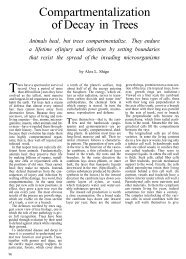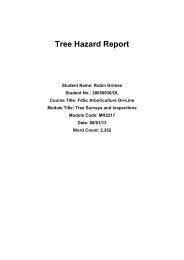working today for nature tomorrow - Justus-Liebig-Universität GieÃen
working today for nature tomorrow - Justus-Liebig-Universität GieÃen
working today for nature tomorrow - Justus-Liebig-Universität GieÃen
- No tags were found...
You also want an ePaper? Increase the reach of your titles
YUMPU automatically turns print PDFs into web optimized ePapers that Google loves.
continuous woodlands are smaller than those in fragmented <strong>for</strong>ests (Kerth and others 2002,Lüttmann and others 2003).3.8 Common pipistrelle Pipistrellus pipistrellusForest habitats: Although most maternity colonies are in buildings, <strong>for</strong>ests of any type areused as roosting and <strong>for</strong>aging areas, particularly if open water is in the vicinity.Summer roosts: The species mainly occurs in settlements and is even present in city centres.In summer the roost sites are predominantly in crevices in buildings (Dietz & Weber 2000),especially between tiles and the underlying roofing or behind boards on the gable (e.g.Rackow 1994). Furthermore, individuals and maternity colonies use tree holes, woodcrevices, and bird or bat boxes as roosts (Eichstädt & Bassus 1995). Summer roosts arechanged frequently, on the average every 11-12 days, so that colonies develop a roost sitenetwork with subgroups that change their composition each day (Feyerabend & Simon 2000).The common pipistrelle can be associated with all other bat species that roost in buildings(Meinig & Boye 2004, Taake & Vierhaus 2004). Ohlendorf (1998) observed the speciestogether with Nathusius’ pipistrelle and Brandt’s bat in bat boxes.Winter roosts: The common pipistrelle hibernates in large caves or other undergroundrooms, but also in crevices in the outside walls of buildings (Meinig & Boye 2004, Simonand others 2004). The animals are usually not visible as they hide in narrow crevices wherethey have as much body contact as possible with the surrounding (Simon & Kugelschafter1999).In many regions of Germany and elsewhere there are mass hibernacula where manythousands of the common pipistrelle stay during winter (Dobrosi n.y., Decu and others 2003,Simon and others 2004, Uhrin 1995). At one of these German sites, <strong>for</strong> example, wheremating is also recorded, genetic relatedness with the bats from the surrounding landscapewith a radius of about 100 kilometres was proved (Hüttenbügel and others 1998).Some individuals migrated across nearly 770 kilometres and successful homing was observedin specimens that were translocated more than 143 kilometres from their roost (Grimmberger& Borg 1979, Roer 1981, 1989). But usually the species is sedentary and the distancebetween summer and winter roosts is not more than 50 kilometres (Grimmberger & Bork1979, Haensel 1979, Simon 1998).Other roosts: After weaning of the young, the common pipistrelle visits temporary roostsites (Simon and others 2004). At this time the animals are swarming at hibernacula (Sendor& Simon 1998), probably to check the locality and its suitability <strong>for</strong> hibernation (Simon andothers 2004).Foraging areas: The common pipistrelle is abundant nearly everywhere in its range.Foraging areas are mainly along edge structures, e.g. <strong>for</strong>est edges, hedges, foot paths and<strong>for</strong>est roads, water banks, and at street lights (Austria: Spitzenberger 2001, Czech Republic:Vlasin & Malkova 1998, Denmark: Baagøe 2001a, Germany: Meinig & Boye 2004, Simonand others 2004, Greece: Hanak and others 2001, Hungary: Dobrosi n.y., Italy: Spagnesi andothers 2000, Luxembourg: Harbusch and others 2002, Poland: Kowalski & Ruprecht 1981,Woloszyn 2001, Spain and Portugal: Benzal and others 1991, Switzerland: Haffner & Stutz26


